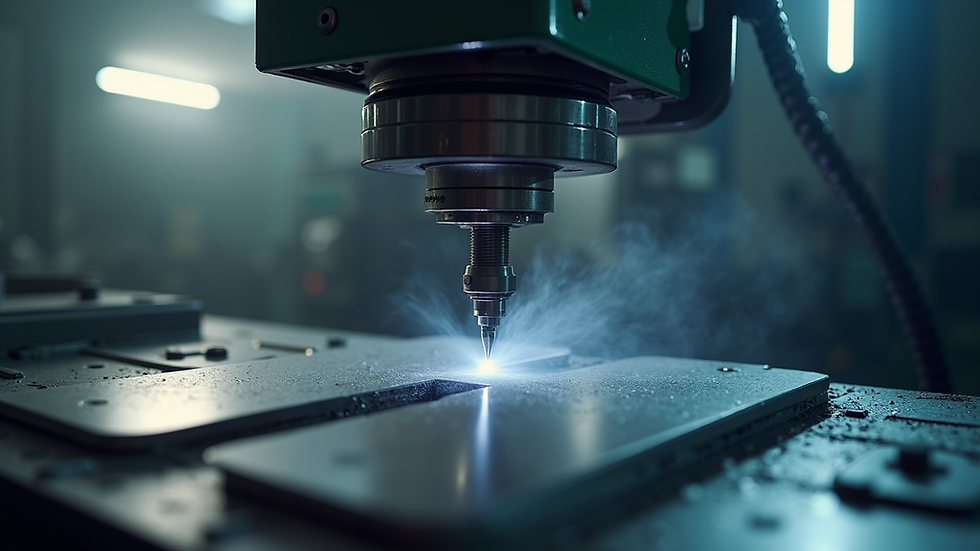Precision Engineering for High-Quality Medical Components
- Dale Glenn- President/Owner
- Jul 7
- 3 min read
Updated: Jul 28
In the fast-evolving medical industry, the demand for highly accurate and reliable components is more critical than ever. Precision engineering plays a pivotal role in producing high-quality medical components that improve patient outcomes and enhance the functionality of medical devices. As healthcare technology advances, the need for precision in manufacturing processes increases, ensuring that every component, no matter how small, meets the stringent regulatory standards set forth by governing bodies.

High-Precision Components in Medical Devices
The term "high-precision components" refers to parts and materials that are manufactured with minimal tolerances and exceptional detail. In medical devices, these components must be fabricated to function flawlessly, as even a slight deviation can jeopardize patient safety. For instance, components such as surgical instruments, diagnostic equipment, and implants rely on precision engineering to perform consistently under various conditions.
High-precision components are essential for:
Surgical Instruments: Tools like scalpels, clamps, and scissors must be sterility, rust resistance, and robustness, manufactured to exact specifications to ensure efficacy during operations.
Imaging Devices: Components of MRI and CT machines rely on precision parts for accurate imaging, which is crucial for diagnosis and treatment planning.
Implants and Prosthetics: Custom-fitted implants require exceptional accuracy for compatibility with patients' anatomy, ensuring comfort and functionality.
With the right engineering processes in place, manufacturers can produce high-quality medical components that meet the industry's demanding standards.

The Role of Precision Engineering
Precision engineering involves skilled craftsmen, advanced machinery, and cutting-edge technology working together to create intricate components. The processes used are highly specialized and often include:
Computer Numerical Control (CNC) Machining: CNC machines offer the capability to create complex shapes and sizes with high accuracy. This technology automates the machining process, reducing human error and increasing production efficiency.
Injection Molding: This technique allows for the production of parts in bulk, ensuring uniformity and precision across thousands of components, which is particularly important for items ranging from connectors to housings in devices.
Electro-Discharge Machining (EDM): EDM is used for hard metals and intricate designs. This method uses electrical discharges to shape materials, making it perfect for crafting high-precision components in a variety of medical devices.
Each of these processes contributes to creating components that not only meet but often exceed the stringent regulations of the FDA or other healthcare regulatory bodies.

What Does Precision Medical Sell?
Precision Medical specializes in offering precision-engineered products tailored for healthcare applications. Their range of products includes:
Orthopedic Implants: Utilizing advanced materials and precise manufacturing techniques, they produce devices that integrate seamlessly with the human body.
Surgical Instruments: Providing a full line of instruments that are meticulously crafted to enhance surgical precision during procedures.
Diagnostic Instruments: Their high-precision components are crucial in tools used for patient diagnosis, ensuring accuracy in results.
This company’s commitment to quality and precision makes them a trusted partner in the medical manufacturing industry, providing critical components that help improve patient care.
Advantages of Precision Engineering in the Medical Field
The implementation of precision engineering in the medical sector brings numerous benefits:
Enhanced Quality Control: With tight tolerances and rigorous testing, medical components produced through precision engineering maintain high standards, minimizing defect rates.
Optimized Performance: Precision components perform consistently under a range of conditions, ensuring reliability that healthcare professionals can depend on.
Cost Efficiency: Although the initial setup for precision engineering may be capital intensive, the long-term savings from reduced waste and lower defect rates significantly outweigh initial costs.
Flexible Customization: Manufacturers can tailor components to meet specific needs, accommodating a wide range of medical applications and accommodating unique patient requirements.
Regulatory Compliance: High-precision manufacturing processes ensure that components meet or exceed the guidelines established by health authorities, promoting safer healthcare practices and improving patient outcomes.
In conclusion, precision engineering is fundamental in producing high-quality medical components that meet the rigorous standards of the healthcare sector. Manufacturers who invest in precision capabilities stand to reap the benefits of enhanced quality, optimized operational efficiency, and customer satisfaction.
Embracing the Future of Precision Medical Manufacturing
As we look to the future, the importance of precision engineering in the medical field will only grow. Technological advancements, such as 3D printing and artificial intelligence, promise to further refine the manufacturing process, leading to even higher levels of precision.
Staying ahead in this competitive landscape will require manufacturers to consistently innovate and adapt. Those that prioritize precision in their production processes will be well-positioned to meet the demands of an evolving healthcare environment, ultimately leading to better outcomes for patients and healthcare providers alike.
To learn more about how precision contributes to high-quality medical components, you can explore more details on precision medical components.






Comments